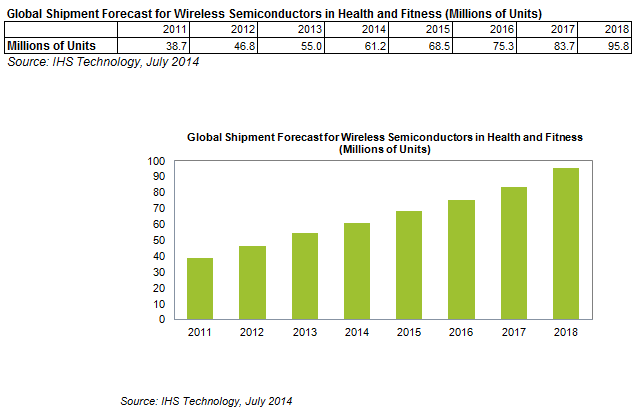Shipments of wireless semiconductors in health and fitness will increase 11 percent to 61.2 million units this year from 55 million in 2013, said IHS Technology.
Shipments will be reaching 95.78 million units in 2018.
IHS Technology said shipments of consumer health and fitness devices with wireless connectivity will grow to 75.7 million units in 2018 from 23 million units in 2011.
The health and fitness market includes the sports and fitness segment on the one hand, as well as the adjacent market for health and wellness on the other.
Among the various wireless technologies now available on the market for health and fitness, Bluetooth Smart is the most successful, the research report said.
Bluetooth Smart enables even the smallest wearable products such as foot pods to operate for years on a battery the size of a coin cell.
Bluetooth Smart is the able to communicate with mobile platforms including Apple iOs, Google Android, Microsoft Windows 8 and the BlackBerry operating system.
Moreover, the dongle-free connectivity of Bluetooth Smart gives it an edge over other rivals.
One wireless technology specifically designed for the health and fitness market and popular with heart-rate monitors, ANT/ANT+, is a low-power technology that, however, does not enjoy the same broad support in mobile platforms.
A PC or dongle is required for ANT/ANT+, unlike Bluetooth Smart. Still, ANT/ANT+ enjoys a significant market share and seems to have a defensible position, especially in products designed for serious fitness enthusiasts and in cycling electronics.






